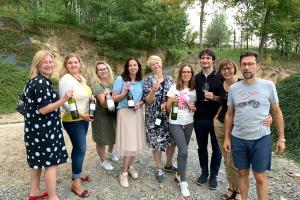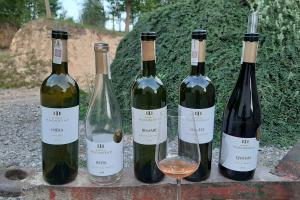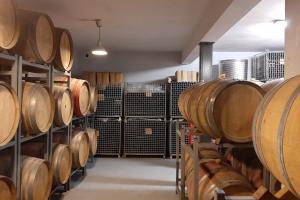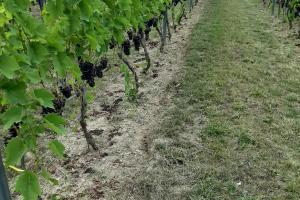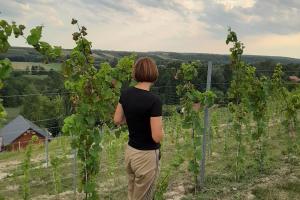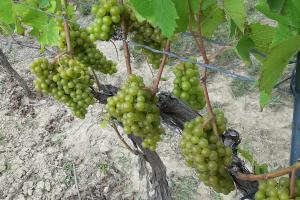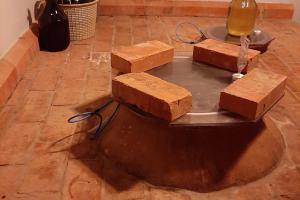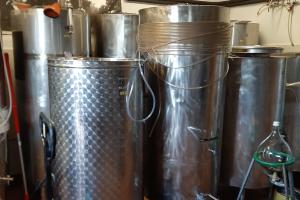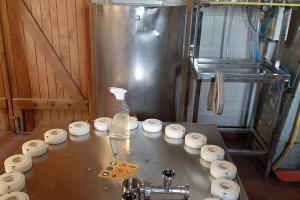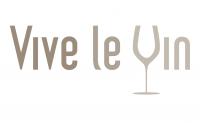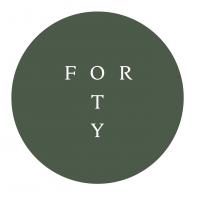Blog
On the Sandomierz wine trail: Winnica Płochockich
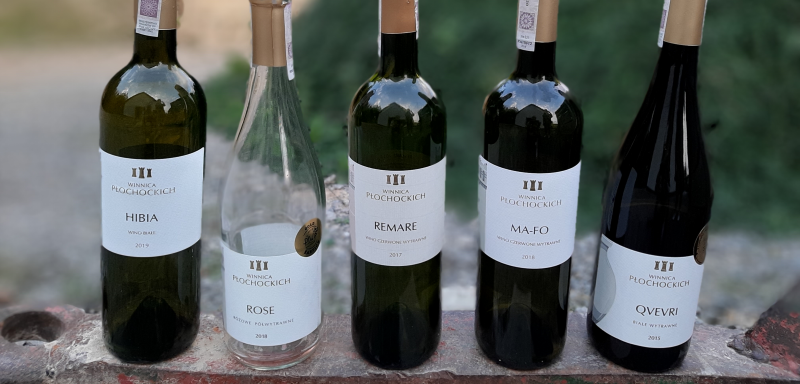
I will always associate the name Płochoccy with a very good Zweigelt – it was the first Polish red wine which really surprised when I tried it a few years ago. That was a year of wine discoveries: single-variety Zweigelt wines, Polish wines in general and the first Polish red wine to suit my palate.
When I started to plan the list of vineyards I’d like to visit on our whistle-stop weekend wine tour in the Sandomierz region, I immediately placed the Płochoccy Vineyard at the end of Saturday as a kind of complement to the first day of tasting. As the second commercial vineyard registered in Poland just after the law was amended in 2008, it has experienced winemakers, a well-known vineyard, as well as a wide range of varieties and types of wine to choose from.
On the way to the Płochoccy Winery, we noticed once again that, unlike the vineyards located near Wroclaw (you can read about our trip to that region here), those in Sandomierz maintain the road markings and signs, making it easier for guests to reach the wineries. This professional marketing and sales approach, in the style of the Western European wine regions, is very much appreciated by guests.
We managed to find a place in the parking lot, where there were already several cars; it turned out that a few groups of visitors had come that day. Barbara Płochocka welcomed all the guests in front of the winery, which, as we found out, is located on the ground floor of a building converted from an old barn - the hosts bought this land along with the buildings on it in 2005, turned the old barn into a winery (including a cellar where the wine is aged before and after bottling), and a few years later, added another floor, which now offers guest rooms, a large tasting room and a shop.
We started our tour at the vineyard located on a small hill behind the building, where on an area of 5 hectares the hosts cultivate a dozen grape varieties: Sibera, Seyval Blanc, Muskat, Hibernal, Rondo, Zweigelt, Traminer, Regent, Cserszegi Fuszeres, Riesling, Cabernet Cortis, Johanniter, Solaris, Marechal Foch, Muskaris and Pinot Noir. Currently, the grapes are harvested only from 4½ hectares. The Płochoccy family has also decided to gradually eliminate some of the bushes (those less efficient and less suited to the style of their wines), thus limiting their portfolio from a dozen to just a few labels. It is worth mentioning that it is a large vineyard by Polish standards, the winemakers have already introduced 11 vintages to the market, each with several or a dozen labels. Now it's time for them to focus and choose the most interesting and best-selling types of wine.
One of the visitors asked about the origins of the Płochoccy winery and we found out that this is not their first winery. In 2002, influenced by a meeting and some conversations with Roman Myśliwiec, one of the precursors of modern winemaking in Poland, Barbara and Marcin Płochoccy purchased a plot of land near Jasło, where they set up their first vineyard. At that time, they travelled regularly between their hometown and the vineyard (approx. 300 km), combining professional work not related to winemaking with this new passion. They planted the first bushes, took part in training courses and meetings of Polish winemakers, and they knew that their passion and hobby would one day become their profession. But the logistics were so difficult that in 2005 they decided to buy a larger plot of land closer to home. The choice fell on the area of Sandomierz, where the history of winemaking dates back to the 13th century (the first vines in Sandomierz were planted - and grapes made into wine - by Dominican monks in around 1226). The fertile soil, the slopes, the microclimate and the fact that apricots are grown in the area - these fruit trees, like grapevines, are difficult to grow, require appropriate conditions and temperature - assured the Płochoccy family that they had chosen a good location for their next, large vineyard.
The first wine produced from the harvest from the Sandomierz vineyard received recognition at the Polish Winemakers' Convention, so when the law allowing the sale of self-produced wine came into effect in 2008, it became the second vineyard in Poland to be officially registered as a commercial vineyard. And in that very year, they launched most of the 1,500 bottles they produce.
After a tour of the vineyard, Barbara Płochocka invited us to a large, professional tasting room.
The basic tasting of the day included:
Hibia, a white wine from 2019 - good acidity, notes of apples, pears and rose which are characteristic of Traminer grapes. Hibia is a blend of Hibernal, Solaris, Traminer and Cserszegi Fuszeres.
A semi-dry Rosé from 2018 – a rosé wine which, contrary to the term "semi-dry", has a pleasant, crisp acidity, and a beautifully concentrated colour for medium structured rosé wines. It is a blend of Marechal Foch, Bolero and Rondo. There are lots of notes of strawberry, wild strawberry and peony in the nose – it is a very interesting and joyful wine, perfect for the summer.
Remare – a dry red wine of medium structure and acidity. It has aromas of blackberries, cherries and light notes of herbs. It is a blend of Regent and Marechal Foch.
For our group we prepared a little extra: two extra wines to taste. Firstly Ma-Fo, a full red wine made from the Frontenac and Leon Millot grape varieties. It has a purple colour, aromas of dark fruit, dried plums, together with vanilla and toasted notes (due to maturation in the barrel) and a pleasant tannin.
And at the end we had the opportunity to taste Qvevri -a wine made using the old Georgian method in qvevri. We saw a few barrels of orange wine made in qvevri in the winery and I was very keen to show the guests this wine. A few members of our group had already had an opportunity to taste orange wines, including wines made in qvevri, and unfortunately they didn’t enjoy them. But this time it was different.
The Qvevri 2015 vintage was opened by Basia Płochocka 30 minutes before being served to us, to let the wine breath and open up. Thanks to that, all the unpleasant aromas which are characteristic of many wines kept on skins (so-called skin-contact wines) had disappeared and the wine turned out to be a very "friendly" qvevri wine. We were able to detect beautiful aromas of dried fruit, cloves, orange peel, and nutty notes which are characteristic of orange wines. The amber-orange colour, the freshness and slight spiciness combined with a hint of dried apricots were a pleasant surprise to even sceptical people: the wine has a pleasant and interesting taste. This wine is unfiltered, but the 2015 vintage is beautifully structured, the sediment has settled, and the wine is clear with a shade of dark amber.
By the way, it is worth adding that in Georgia wines are traditionally made in large clay vessels resembling amphoras (qvevri), which are immersed in the ground, thanks to which the wine ferments and matures at a constant temperature. And this is how the Płochoccy make their Qvevri wine.
When I look at the bottles of wines from the Winnica Płochockich vineyard, my first impression is that the labels are clean and aesthetic: in addition to the name of the vineyard, they contain the name of the wine (usually made up of the first letters of the grape varieties from which the wine is made), the vintage and type of wine (e.g. dry white). On the back label, apart from basic information (alcohol, serving temperature etc.), you can also find the name of grape variety with a description of the aromas.
The two-hour meeting was professionally organized and conducted, we received a lot of interesting information about the origins of the vineyard and got to taste wines, while more inquisitive guests had the opportunity to ask questions. Finally, we managed to persuade the hosts to take a photo, so that we had a souvenir of our visit.

